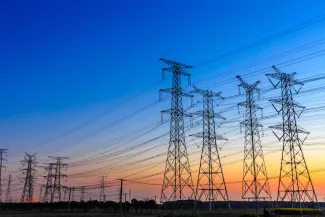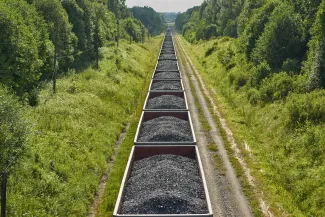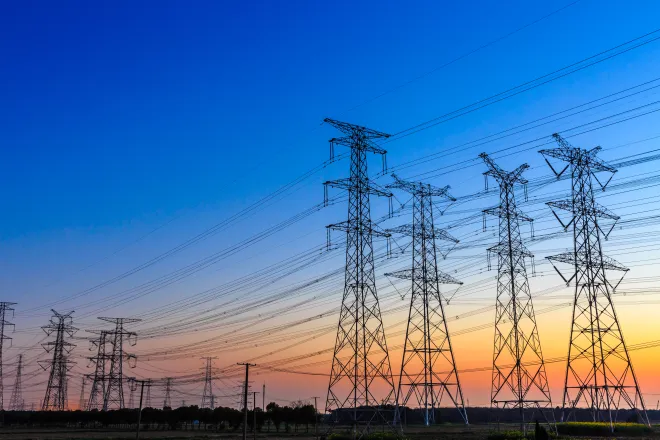
Opinion - Will a Trump presidency slow Colorado’s energy pivot?
Colorado aims to reduce its greenhouse gas emissions 50 percent by 2030 and achieve net-zero by 2050. Would a second Donald Trump presidency frustrate those ambitions?
Not entirely. The energy transition train has already left the station. Colorado has become a national leader in transforming our energy systems, beginning with how we produce electricity. No president can stop that. The economics of renewable energy are too compelling. Coal has become the high-priced fuel, and even natural gas is being crowded out to the margins.
Beyond 2028 coal will almost entirely be gone. Electricity in Colorado will be upwards of 70 percent emissions-free. Some utilities will aim higher. Holy Cross Energy already surpasses 80 percent and hopes to surpass 90 percent sometime next year.

© zhaojiankang - iStock-802436842
The Inflation Reduction Act of 2022 has pledged more than $3 billion to Colorado electrical cooperatives to make the transition for their members in the state’s four corners More money is likely , and more is likely coming. The state’s 22 cooperatives together serve 20 percent of the state’s residents but about 70 percent of its geographic area.
In July, Colorado’s two senators were at the EPA headquarters near Denver’s Union Station to announce a $200 million grant for work in the nine-county Denver-Boulder metro area to begin retrofitting houses to use less natural gas. The state government got $129 million at the same time for various efforts to reduce methane and carbon dioxide emissions.
Might Trump try to kill this landmark law, the most important climate legislation yet enacted if he ends up in the White House? He’s “going to claw back every penny he can claw back from the Inflation Reduction Act,” U.S. Senator John Hickenlooper told me when I asked his view. “He thinks climate change is a hoax.”
Trump made that statement about a hoax when he was running for president in 2016. At times, he has softened his stance, but even recently he called climate change “one of the greatest scams of all times.” More clearly, he has promised to dismantle the EPA and roll back regulations. He has solicited $1 billion in financial contributions from the oil and gas industry.
Whether Trump could succeed in curbing the renewable energy outlays is another matter. Remember, he vowed to bring back coal. He declared he would kill Obamacare. He almost succeeded with the latter but he makes no mention of it now. It’s too popular in too many places, including red states. The Inflation Reduction Act might have the same trajectory. As in Colorado, much of the money awarded for the energy transition has been earmarked for red states.

Too, Trump would need Republican majorities in both the House and the Senate. That’s possible but unlikely.
Clearly, Colorado can go far on its own. It has among the nation’s best wind, solar, and hydroelectric resources. It has strong leadership and political cohesion. It has an educated workforce. It has innovators and entrepreneurs.
But Colorado can move even more rapidly and cost-effectively in this energy transition with aid and in concert with the federal government, says Tanuj Deora, a director of the state energy office in the Hickenlooper administration. That includes crafting trade policies that aid, not slow, the energy transition.
A major concern for the Colorado Solar and Storage Association is the cost of solar panels. The industry in Colorado is poised for a gigantic boom through the end of this decade as Xcel Energy, Tri-State Generation and Transmission Association, and other utilities prepare to close their coal plants.
Mike Kruger, the executive director, warns that tariffs that Trump has promised to impose on all Chinese imports will hammer the solar sector, which has 9,000 employees in Colorado. The United States does not have the domestic production capacity to meet domestic demand. The result will be huge price increases.
“You would see massive hemorrhaging of solar jobs and solar companies going bankrupt. A tariff that produces a 70 percent rate hike on imported panels will result in total costs on solar installations going up 25 percent or more. I don’t know of any product that goes up 25 percent in price or more without massive impacts.”
This has been the hottest year for the globe in recorded history. Colorado is far behind Phoenix, with its 113 consecutive days of 100-plus temperatures, but it’s warming rapidly. Grand Junction, for example, had an average temperature of more than 80 degrees this summer, an all-time high.
The full and necessary energy transition will happen. In question is whether it can occur as rapidly as climate scientists say it must. Colorado can provide a national example. It already has. But can move faster with teamwork.
Allen Best publishes Big Pivots, a free e-magazine that chronicles the energy and water transitions in Colorado. See BigPivots.com.














